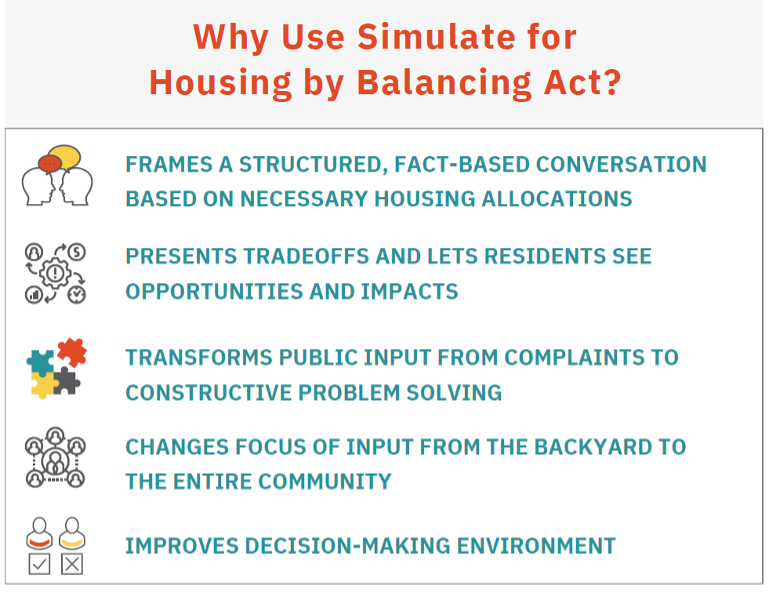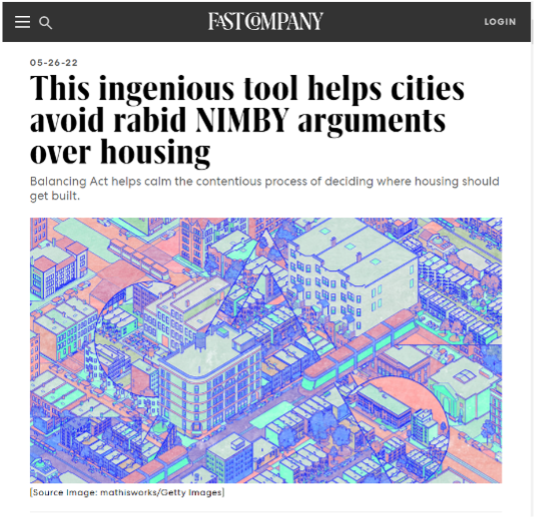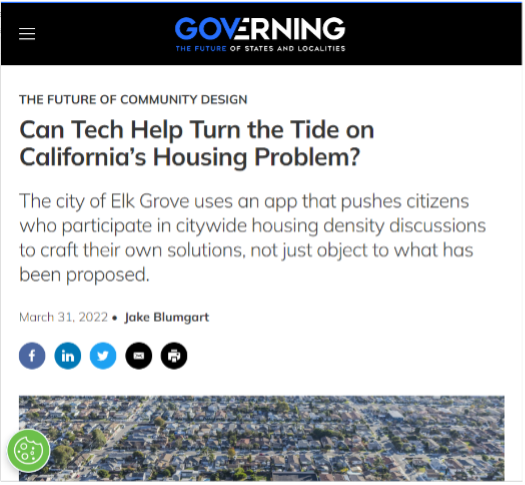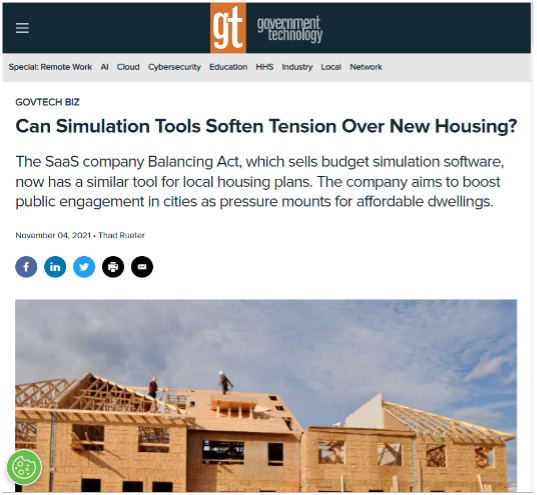Housing
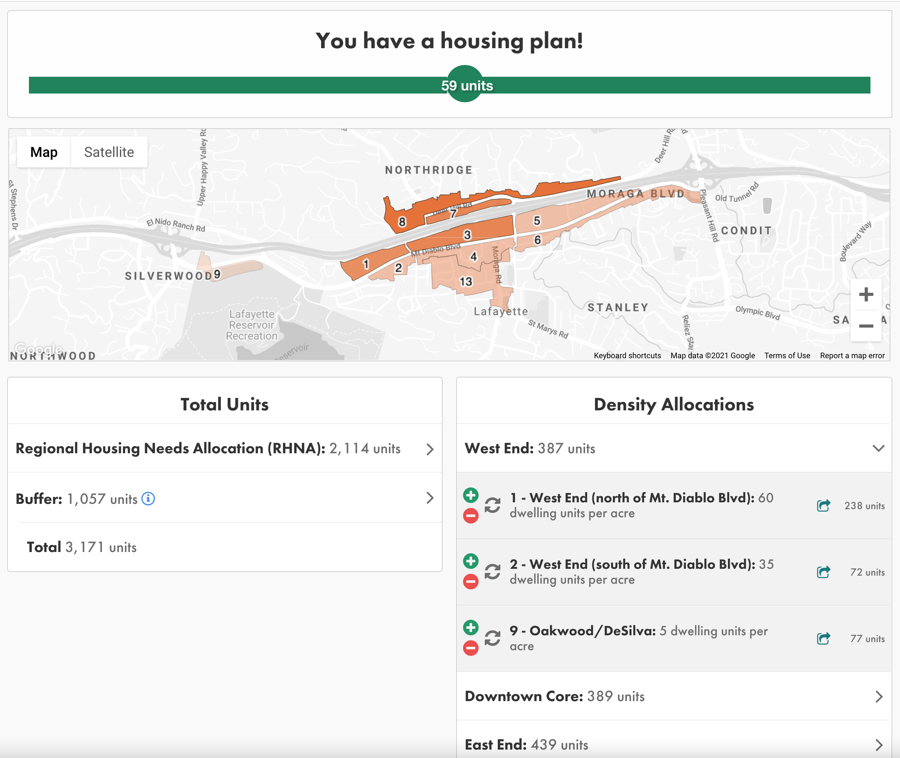
“...Balancing Act is an awesome tool.”
-David Driskell
Principal, Baird + Driskell Community Planning
Why Current Housing Engagement Doesn’t Work
The most common tool for public input on housing is public hearings. Planners and public officials know that these seldom add much value and are usually just a forum for a small group to say no, or what some call “Not in My Backyard.” Research shows that people who attend hearings often do not represent the full community, especially non-homeowners. Surveys are another commonly used tool. They provide limited value because they don’t educate users about goals and constraints, nor do they frame tough tradeoffs.
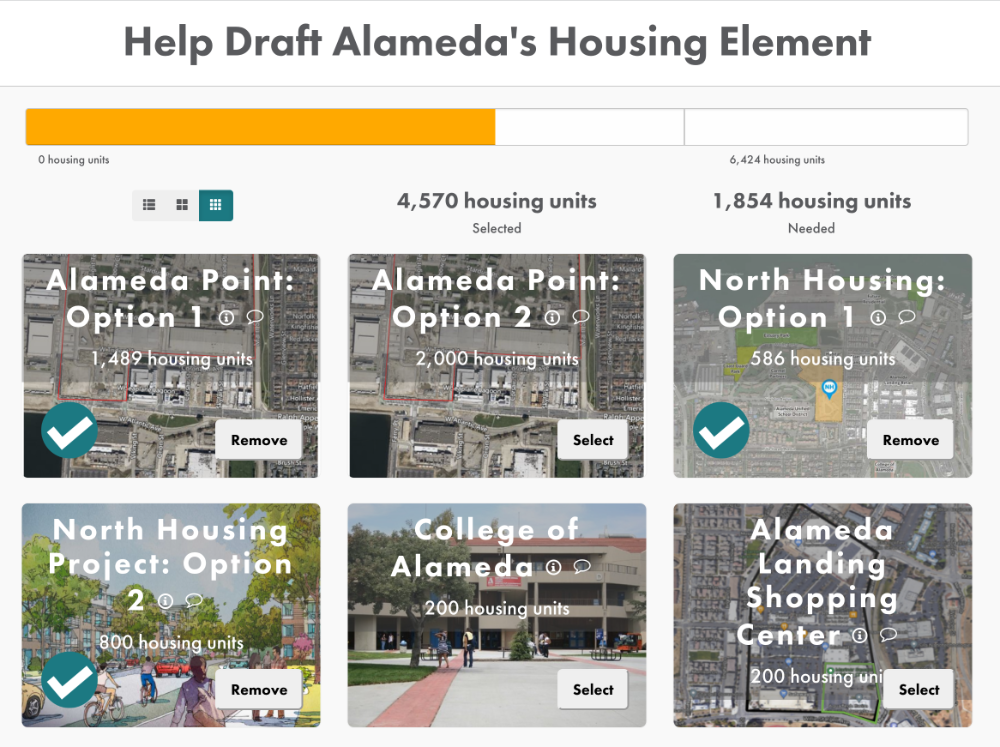
“This is a complex process with a lot of tradeoffs. We wanted residents to understand that it wasn’t just about the site around the corner from their home, but about how all the sites work together to form a system of units that meet the needs of our community.“
-Christopher Jordan
Director of Strategic Planning and Innovation, City of Elk Grove
How Simulations Support Housing
Balancing Act’s online simulations change the participation dynamic in planning and zoning by putting residents in the shoes of decisionmakers and asking them to help solve the problem. Simulations educate and empower users to try different combinations of options to reach a housing goal. Because they are online and accessible from a mobile phone, anyone can participate.
Housing simulation examples: Elk Grove, Lafayette, Eastvale, and Sutherland Shire, Australia.
Key Features

Get informed input from residents on how they would meet housing goals

Interactive map shows where housing would be placed

Can be used online and in in-person sessions

Can be used for specific parcels, density of an area, or type of housing
